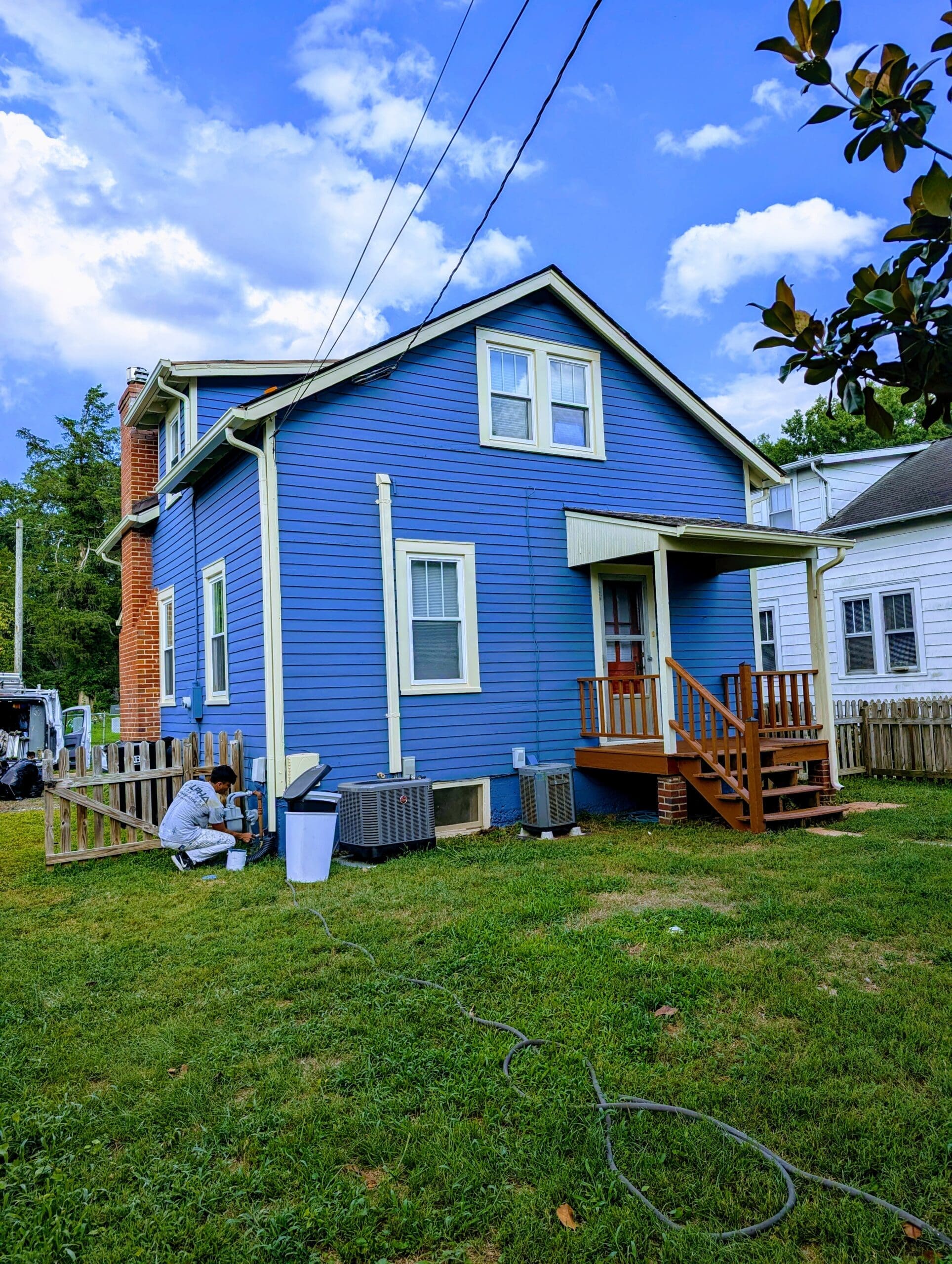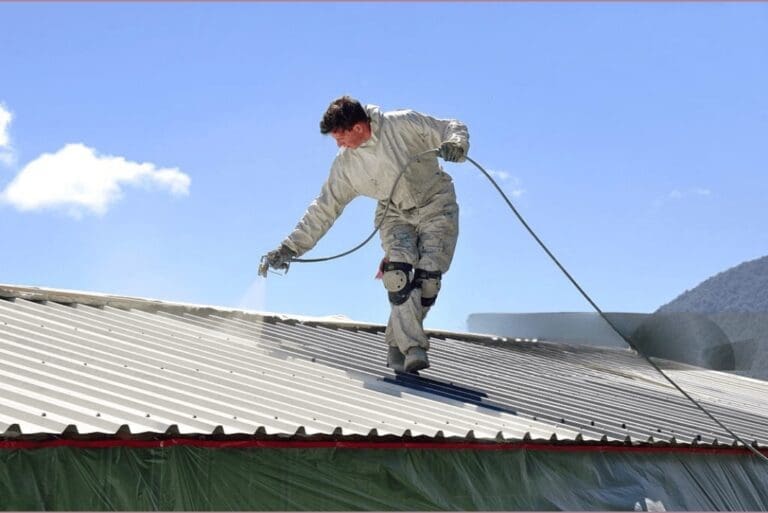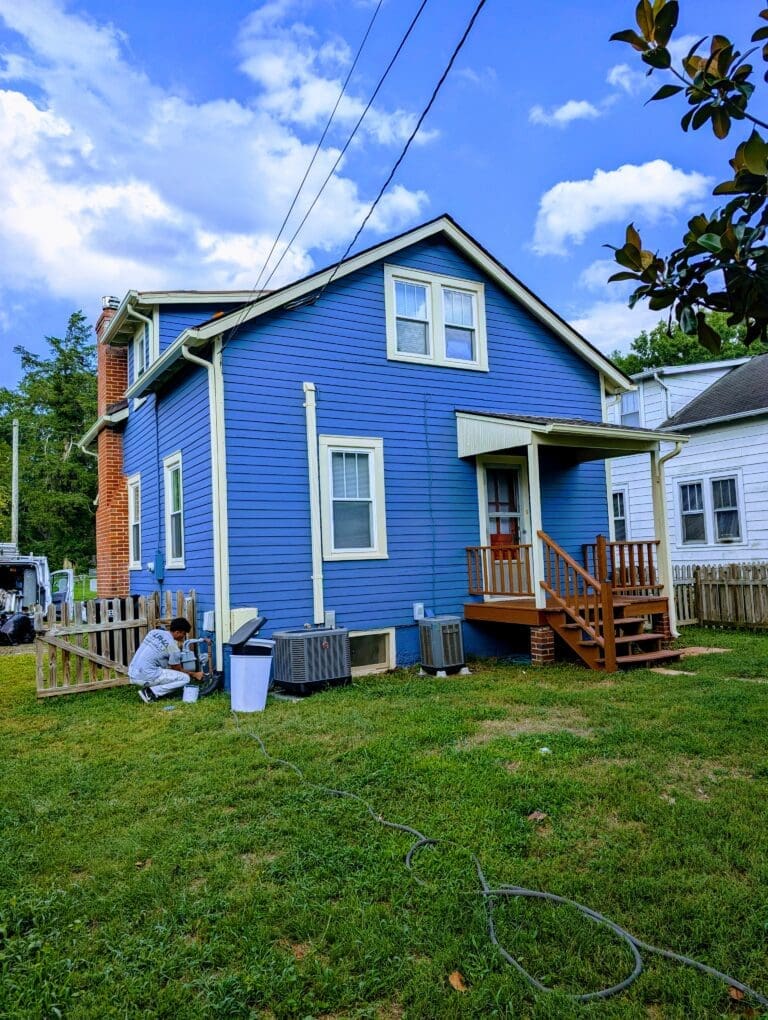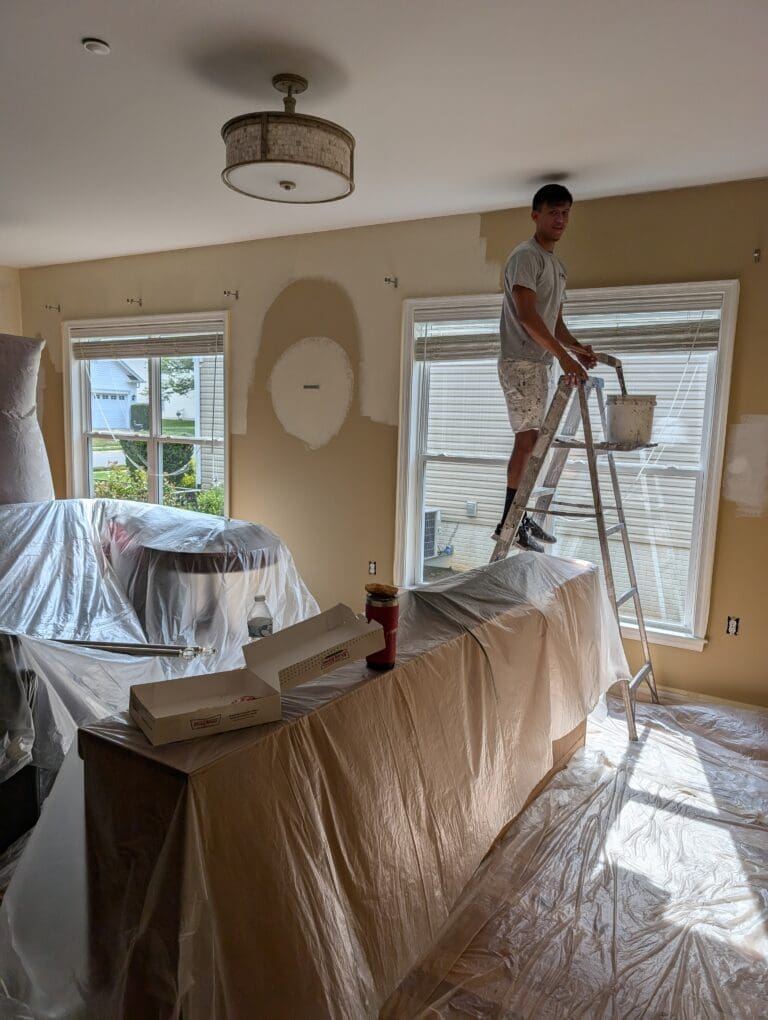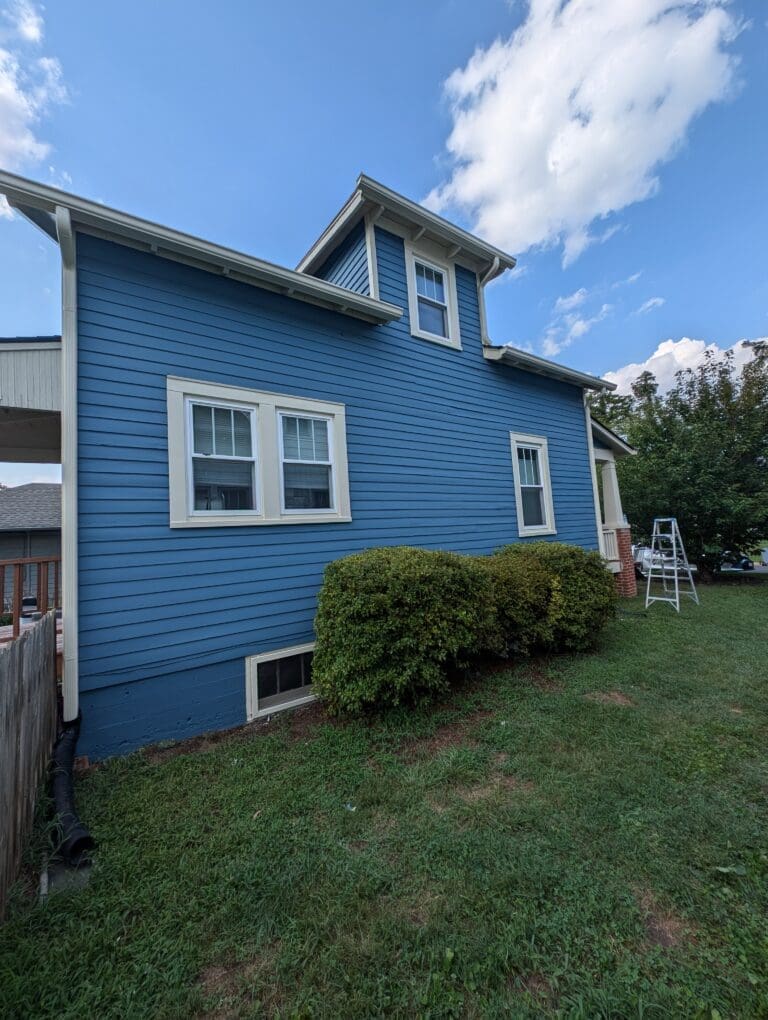How Soon Can You Paint After It Rains? Here’s What You Need to Know
Weather plays a major role in the success of any painting project. Rain, humidity, and surface moisture can all interfere with proper paint adhesion and long-term durability. Timing your painting project correctly after it rains makes the difference between a smooth, lasting finish and a job that peels or bubbles within a few months.
At Alpha Painting LLC, we know the right timing saves property owners both time and money. Our experienced painters assess every project carefully to ensure surfaces are ready for new paint, protecting the beauty and integrity of your home or business.
Table of Contents
Why Surface Dryness Matters Before Painting
Paint needs a clean, dry surface to bond correctly. If the surface is wet, even slightly, it can prevent the paint from adhering properly. Moisture trapped underneath paint leads to common problems like peeling, cracking, bubbling, and mold growth. Over time, this moisture damages not just the paint, but also the materials underneath.
A wall, siding, or trim may look dry on the outside, but moisture can linger within the material, especially in wood, stucco, and masonry. That’s why a visual inspection is not enough after rainfall. Taking extra time to let surfaces fully dry ensures that the new coat of paint lasts longer and looks better.
How Long Should You Wait After Rain to Paint?
Most exterior surfaces require at least 24 hours of dry weather before applying paint. In some cases, 48 hours is safer, especially when humidity levels remain high after the rain stops. Porous materials like wood and stucco soak up more water and take longer to dry than vinyl or aluminum siding.
Temperature also matters. Warm, sunny, and breezy conditions help surfaces dry faster, while cool or overcast days slow down the process. High humidity extends drying time even more, sometimes making it necessary to wait two or three days before starting to paint.
Interior painting projects are usually not affected directly by rain unless the home has leaks or unusually high indoor humidity. However, freshly washed walls or ceilings inside must be fully dry before paint is applied.
Material Type and Drying Time
Different materials react to moisture in different ways. Understanding the surface you plan to paint helps determine the proper drying period.
Wood absorbs water easily and holds it deep within the fibers. After heavy rain, even if wood siding or trim feels dry to the touch, it may still contain moisture inside. Testing with a moisture meter is a reliable way to be sure. Ideally, wood should have a moisture content below 15% before painting.
Stucco also absorbs water but dries from the outside in. After rain, it might take 48 to 72 hours for stucco to be ready for painting, depending on thickness and weather conditions.
Brick and concrete surfaces behave similarly to stucco. They are porous, and moisture can stay trapped inside even after the surface looks dry. Extra drying time ensures the best bond between paint and masonry.
Vinyl and aluminum siding dry much faster than porous materials. Once surface water evaporates, painting can usually begin within 24 hours, assuming humidity is not too high.
How to Check If a Surface Is Dry Enough to Paint
Trusting your hand or sight is risky when it comes to painting after rain. Here are professional ways to make sure the surface is truly ready:
Moisture Meter: This simple tool measures the moisture content inside wood, stucco, or other surfaces. If levels are too high, it’s better to wait longer.
Tape Test: Press a piece of clear tape against the surface and then peel it off. If you see any signs of moisture or condensation on the tape, it’s not ready.
Touch and Time: Gently touch different sections of the surface early in the morning and late in the afternoon. If the surface feels cool or damp at either time, it needs more drying.
Taking a cautious approach is always better than rushing, especially when the goal is a beautiful, long-lasting finish.
Weather Forecast Matters Too
Planning your painting project around upcoming weather is just as important as waiting for the surface to dry. If rain is expected within 24 hours of painting, it’s better to reschedule. Fresh paint can’t properly cure when exposed to moisture too soon.
Ideal conditions for painting include several dry days in a row with mild temperatures between 50°F and 85°F. Low humidity and a light breeze also help paint cure properly. Checking the forecast before starting work saves a lot of potential rework and frustration later.
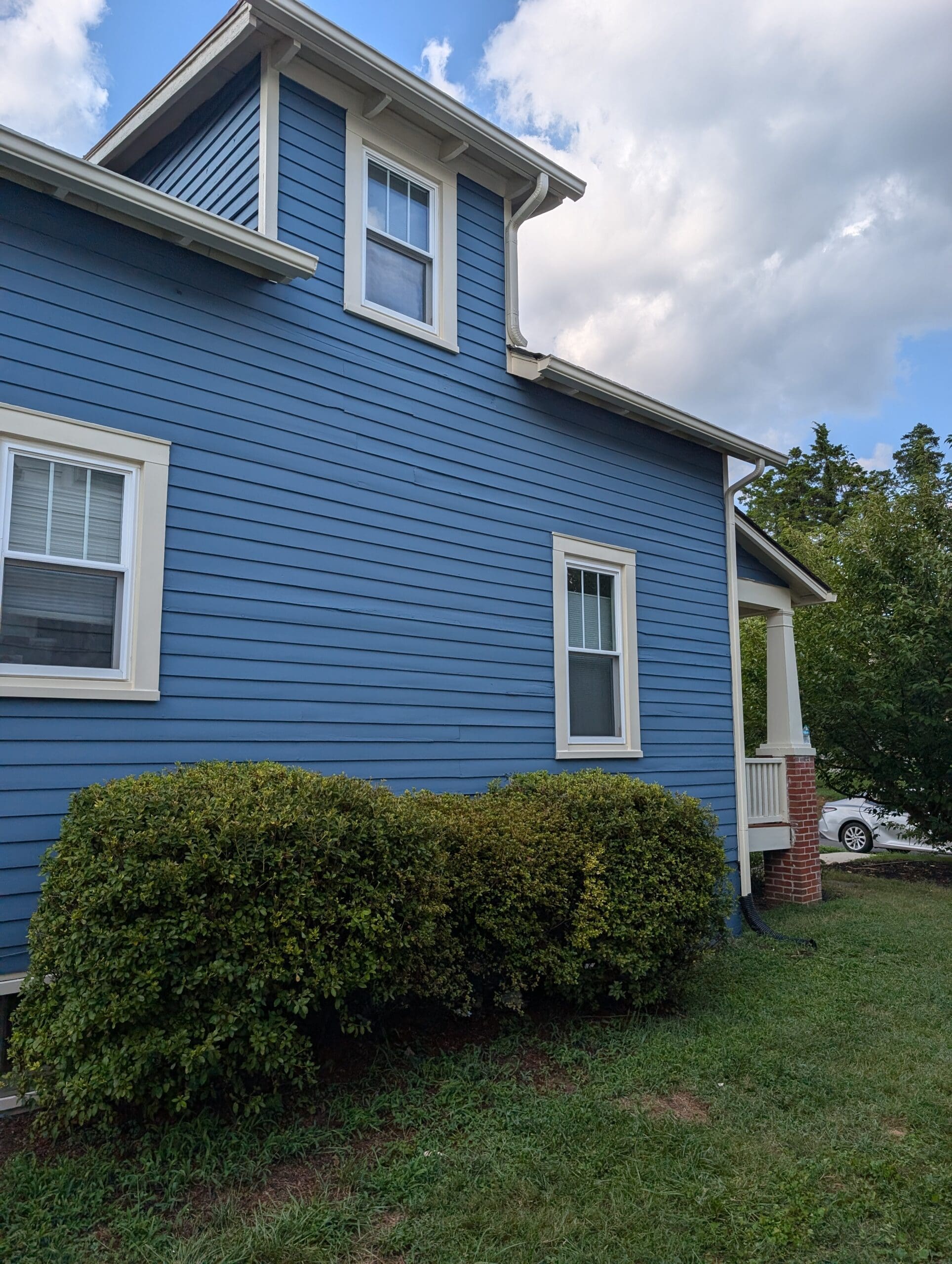
Can You Speed Up Drying Time?
Several methods can help speed up the drying process after rain. Removing standing water from surfaces right after rain ends helps prevent extra saturation. Tenting or covering surfaces with breathable tarps can shield them from additional moisture while allowing air circulation.
Portable fans, blowers, or dehumidifiers can also be used to lower moisture levels, especially for exterior surfaces close to ground level where air movement is often limited.
Direct sunlight is the best natural drying agent. Positioning fans to simulate airflow similar to a breezy day accelerates drying without causing surface damage.
Risks of Painting Too Soon
Painting on a damp surface leads to serious problems down the road. Paint may peel, bubble, or blister within weeks. Colors may appear uneven or blotchy as the paint tries to adhere to a surface that is rejecting it underneath. In some cases, mildew or mold grows between the surface and the paint, creating unsightly stains and health hazards.
Repairs after moisture damage often cost much more than waiting a day or two for proper drying. Plus, surfaces that need to be stripped and repainted suffer more wear and tear, reducing their lifespan and structural integrity.
Final Thoughts
Timing is everything when it comes to painting after rain. Rushing to apply a new coat on a damp surface usually leads to expensive repairs and disappointing results. Waiting the proper amount of time based on material type, weather conditions, and moisture levels ensures that your paint job stands the test of time.
Homeowners and business owners who want a flawless result often trust professionals like Alpha Painting LLC to evaluate their property’s readiness and apply paint under optimal conditions. Investing in expert preparation protects your property and your peace of mind.
Every successful paint project starts with patience and careful preparation, especially when weather challenges come into play.

